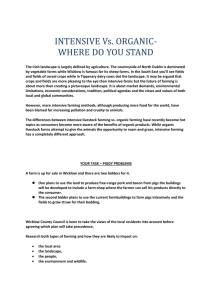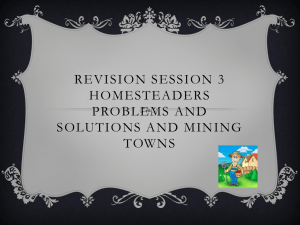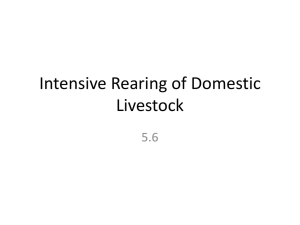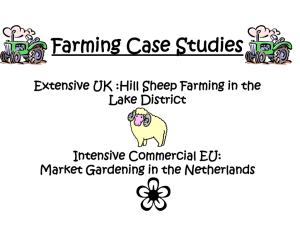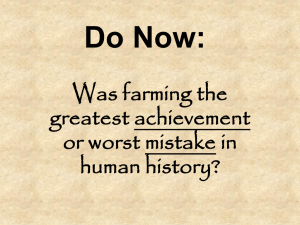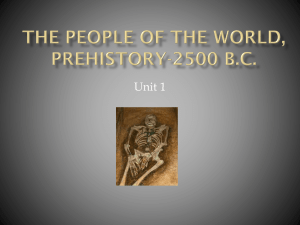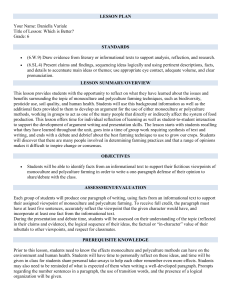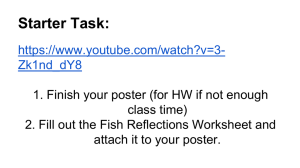Rural Homework 3
advertisement
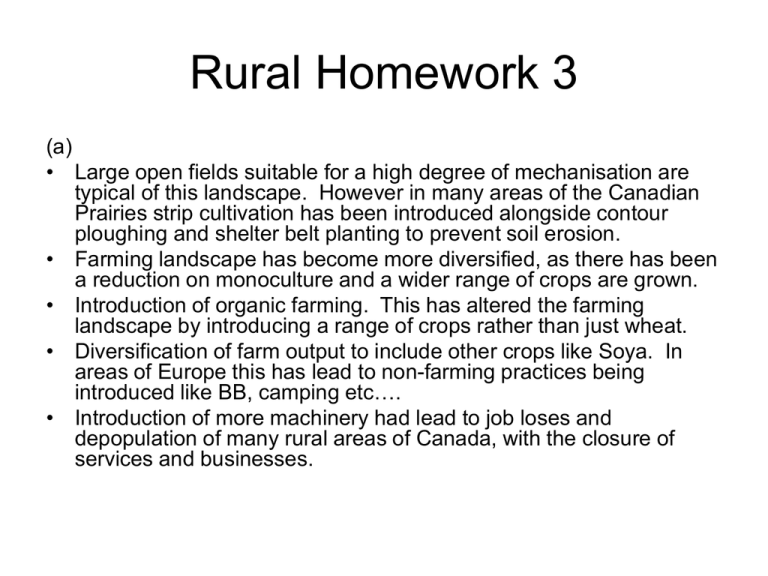
Rural Homework 3 (a) • Large open fields suitable for a high degree of mechanisation are typical of this landscape. However in many areas of the Canadian Prairies strip cultivation has been introduced alongside contour ploughing and shelter belt planting to prevent soil erosion. • Farming landscape has become more diversified, as there has been a reduction on monoculture and a wider range of crops are grown. • Introduction of organic farming. This has altered the farming landscape by introducing a range of crops rather than just wheat. • Diversification of farm output to include other crops like Soya. In areas of Europe this has lead to non-farming practices being introduced like BB, camping etc…. • Introduction of more machinery had lead to job loses and depopulation of many rural areas of Canada, with the closure of services and businesses. Rural Homework 3 (b) • Commercial arable farming has a low population density because; • Low yields per hectare • High dependence on machinery • Use of contract/part-time laborers • Rural depopulation due to; – Dust bowl 1930s – Amalgamation of adjacent farms • Surpluses leading to government quotas and hence job loses • Migration to distant cities by the young for better opportunities. • • • • • • • • • • • • • • • • • • • • • Rural Homework 3 • Large open fields suitable for a high degree of mechanisation are still typical of this landscape, however in many locations strip cultivation is growing in significance. Strip cultivation has been introduced alongside contour ploughing and shelter belt planting to tackle soil erosion. The broad, high row of sunflowers, aligned north-south in parts of the Great Plains, shelter spring wheat and reduce the removal of top-soil by wind erosion • Farming landscape may become more diversified. Further improvements in soil quality are also likely through the reduction in the monoculture of wheat • Introduction, in some areas, of organic farming. This has altered the farming landscape by the introduction of a range of crops in contrast to the monoculture of wheat • Diversification of farm output may provide greater long-term security for the farming population though current data (from North America/prairie states) illustrates that the total farming population continues to decline • The introduction of new crops and consequent increase in expenditure is likely to see a greater dependence on agricultural contractors (as illustrated in the photograph) to harvest newly introduced crops into the farming landscape of extensive commercial agriculture Assess out of 12, allowing up to 8 marks for people or landscape. Award up to 2 mark for description of changes Award 1 mark for specific named location within a country. Rural Homework 3 • • • • • • • • • • • • • • • • • • More intensive production has led to greater use of irrigation with a consequent impact upon the farming landscape eg the construction of reservoirs, more intensive network of irrigation channels • The use of mechanised farm equipment to replace labour intensive implements has further supported more intensive production in much of South East Asia • The development of a ‘monoculture’ of rice as an additional crop grown through the dry season supported by intensive irrigation. The reduction in cattle, which were formerly grazed on the paddies in the dry season, has significantly changed the farming landscape in Western Malaysia • The reduction in the use of draught animals plus the reduction in cattle for meat production has significantly reduced the organic manure returned to the intensively used fields. Chemical fertilisers are now used much more intensively. There is some evidence of pollution of fields and water courses resulting from over fertilisation • In favoured areas the shift from subsistence peasant agriculture to commercial peasant agriculture in now well underway. Farmers have a surplus for sale and are benefiting from improved living standards
